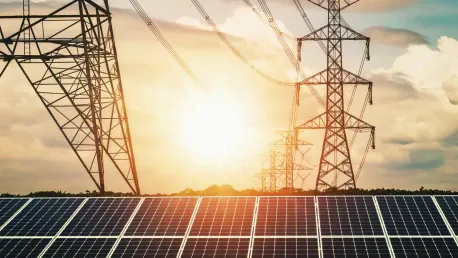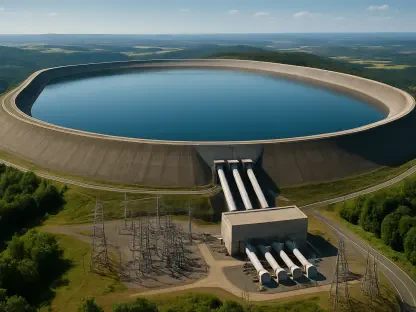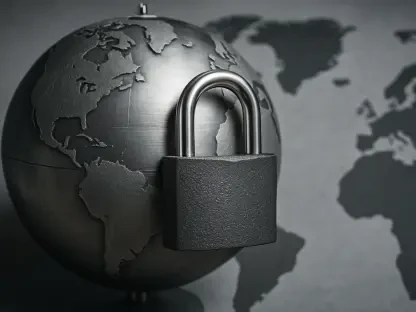The Baltic states, comprising Lithuania, Latvia, and Estonia, have taken a monumental stride towards achieving energy independence by synchronizing their electricity systems with the Continental Europe Network (CEN). This significant milestone not only marks the end of Russia’s longstanding involvement in their energy sectors, but it also underscores the dire need to fortify their critical energy infrastructure against potential hybrid attacks orchestrated by Russia. This move represents a blend of historical resolve and future-oriented strategy aimed at ensuring sustained energy security and stability for the region.
Historical Dependence on Russian Energy
Historically, the Baltic states have been heavily reliant on Russian energy supplies and Soviet-era infrastructure, a legacy that persisted long after gaining independence. Throughout the years, Lithuania, Latvia, and Estonia have faced various forms of coercion from Russia, such as economic blockades, pipeline shutdowns, and politically motivated gas pricing. Despite these aggressive tactics aimed at maintaining Russia’s influence, the Baltic states have emerged as leaders in Europe in their determined efforts to sever ties with Russian energy supplies over the past decade.
A critical turning point in this journey was the installation of the liquefied natural gas (LNG) terminal in Klaipėda, Lithuania, in 2014. This strategic development allowed the Baltic gas markets to diversify and connect with global LNG suppliers, including those from the United States. The flexibility and alternatives provided by this terminal enabled the Baltic states to ban all Russian gas imports just two months into Russia’s full-scale invasion of Ukraine in 2022, illustrating their rapid response capabilities and commitment to energy independence.
Diversification of Energy Supply Routes
Further emphasizing their resolve, the Baltic states timely diversified their oil and electricity supply routes, rendering it feasible to cease these imports from Russia. Key infrastructure projects included the construction of interconnectors such as Estlink 1 and Estlink 2 between Estonia and Finland, Nordbalt between Lithuania and Sweden, and LitPol Link between Lithuania and Poland. These interconnectors played a pivotal role in reducing dependence on Russian energy, acting as vital conduits linking the Baltic states with the broader European energy market.
However, market-level integration with EU neighbors did not immediately diminish Russia’s systemic control over their electricity sectors. Until recently, Estonia, Latvia, and Lithuania’s power grids remained part of the Russian-controlled Integrated Power System/United Power System (IPS/UPS) grid. This arrangement meant that Moscow was responsible for maintaining electric frequency stability in the Baltic states, which posed significant security risks. The dependence on Russia for such a critical aspect of their energy infrastructure highlighted the need for greater autonomy and control over their power systems.
Synchronization with the European Grid
On February 9, Lithuania, Latvia, and Estonia will complete a crucial test by decoupling from the Russian-controlled grid and conducting a joint isolated operation test. This will be followed by their synchronization with the European grid. The synchronization represents the culmination of a process that began in 2007, involving extensive political, regulatory, and infrastructural efforts, bolstered by substantial funding from the EU’s Connecting Europe Facility. This milestone not only markedly reduces their vulnerability to Russian influence but also significantly enhances the stability and reliability of their electricity supply.
Synchronization with the European grid stands as a testament to the Baltic states’ unwavering commitment to energy independence. By aligning their power systems with Continental Europe, they demonstrate resilience and a forward-thinking approach to regional energy security. This crucial step also ensures a more stable and reliable electricity supply, fortifying the region against potential disruptions and underscoring their integration with European energy markets. The political and infrastructural investments over the last decade are now bearing fruit, signifying a new era in the Baltic states’ energy landscape.
Ongoing Threats to Critical Infrastructure
Despite this remarkable achievement, ongoing threats to the Baltic states’ critical infrastructure persist, necessitating vigilant protective measures. Since October 2023, at least eleven underwater cables in the Baltic Sea, including gas pipelines and communication cables, have been damaged. While most incidents involved vessels inadvertently dragging anchors on the seabed, there are growing concerns that these could be intentional acts of sabotage, with Russia’s “shadow fleet” oil tankers potentially culpable. These incidents underscore the vulnerabilities inherent in the region’s energy infrastructure and highlight the need for robust security measures.
In response to these threats, NATO has initiated the Baltic Sentry patrol mission and established a Critical Undersea Infrastructure Network. These measures aim to enhance security and situational awareness, particularly in safeguarding the critical infrastructure essential for the region’s energy security. The cooperation and coordination among NATO allies underline the collective commitment to countering potential hybrid attacks and ensuring the continuous protection of vital energy assets. As the Baltic states advance towards energy independence, maintaining the security of their infrastructure remains paramount.
Enhanced Security Measures
To further bolster the protection of critical infrastructure, Lithuania has increased its military involvement in safeguarding seaborne assets and has urged the EU for financial support to enhance security measures. This proactive stance is integral to ensuring the resilience and security of energy supply routes. Moreover, the protection of the onshore LitPol Link interconnector between Lithuania and Poland has been heightened, replacing private security contractors with state security forces. These adjustments reflect a comprehensive approach to security, emphasizing state-level intervention to mitigate risks.
Another particularly vulnerable area is the Suwałki Gap, a narrow land corridor connecting Lithuania and Poland. Given its strategic significance, this corridor requires a robust protection regime. Increased NATO presence and the installation of the Baltic Defense Line along the borders with Russia and Belarus are proposed measures to enhance security in this critical region. Such initiatives highlight the importance of both international cooperation and localized defensive strategies in mitigating the risks associated with potential hybrid threats and ensuring the uninterrupted operation of the energy infrastructure.
Strategic Stability and Future Efforts
The Baltic states, consisting of Lithuania, Latvia, and Estonia, have made a significant leap toward energy independence by integrating their electricity systems with the Continental Europe Network (CEN). This achievement ends Russia’s long-held influence over their energy sectors. Additionally, it highlights the urgent need to reinforce their critical energy infrastructure to guard against potential hybrid attacks orchestrated by Russia. This synchronization is not merely a technical upgrade but represents a profound mix of historical determination and forward-thinking strategy. The goal is to guarantee enduring energy security and stability for the entire region. This strategic pivot ensures that the Baltic states are better prepared for future challenges and less dependent on external energy sources, fostering regional resilience and autonomy. This move signifies a crucial step in protecting their sovereignty and enhancing their collective energy framework in the face of evolving geopolitical threats.









